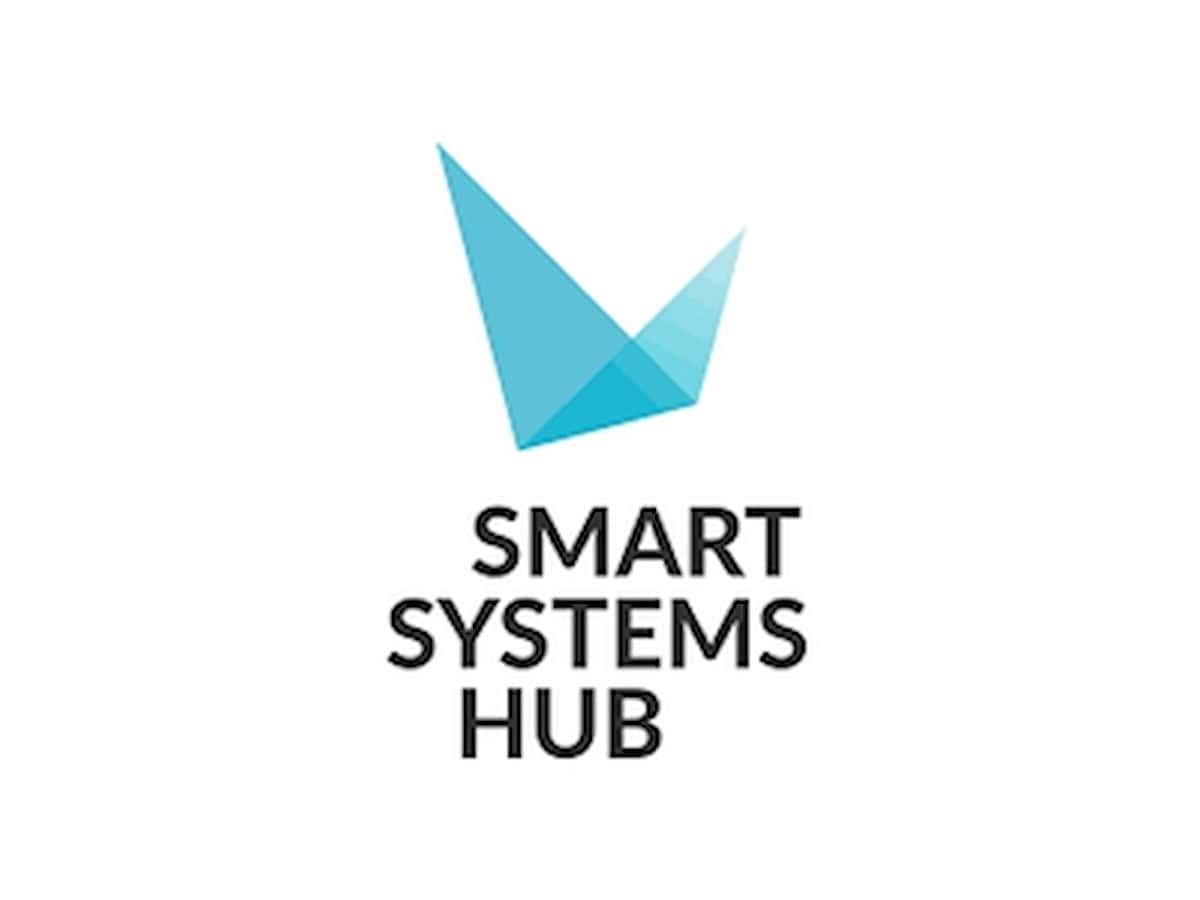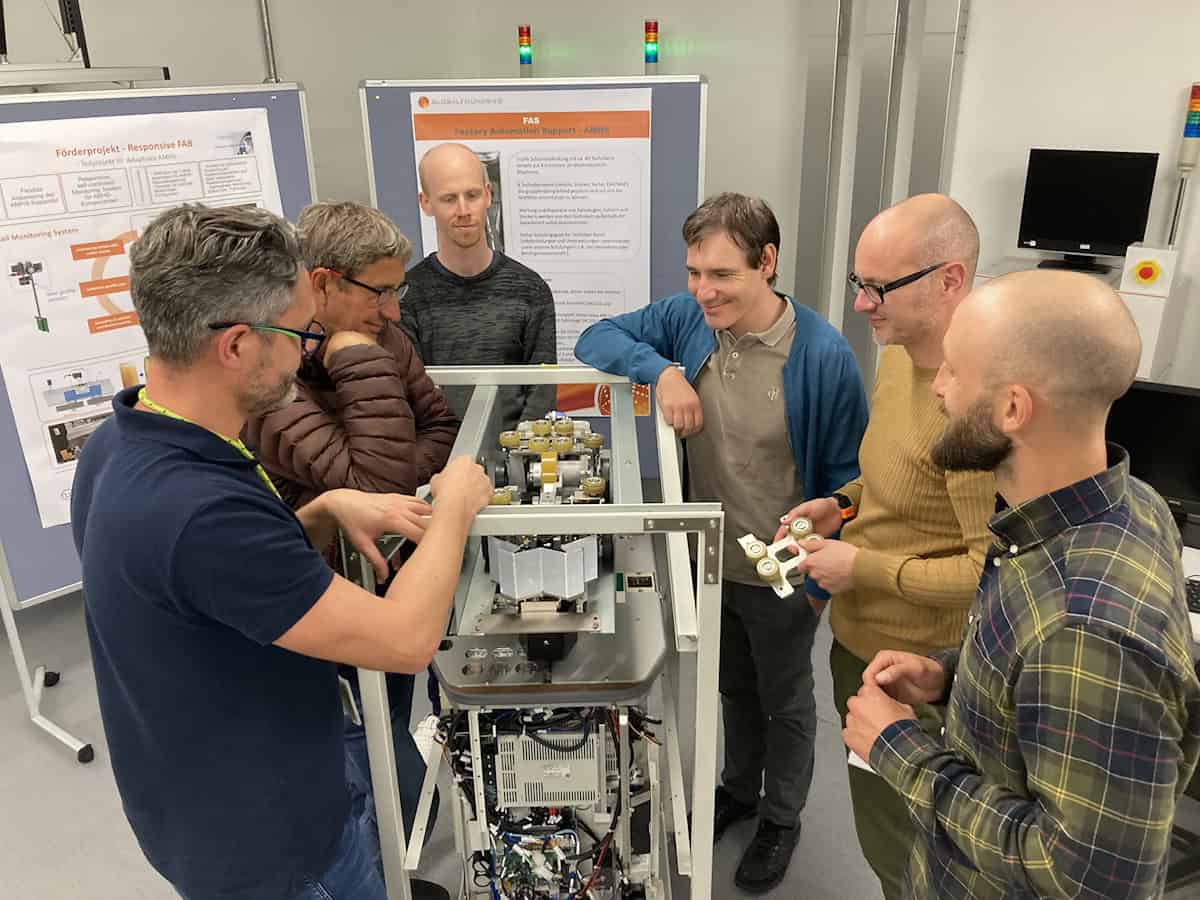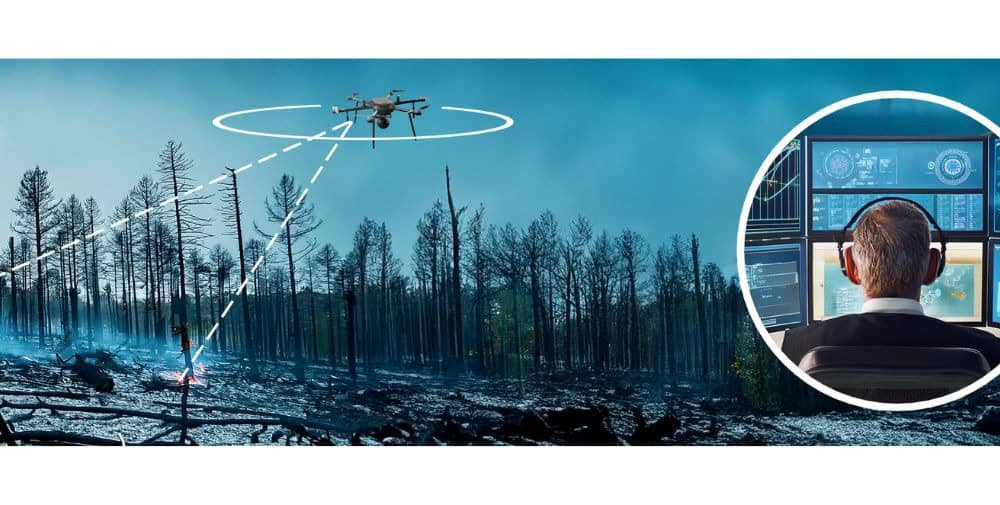
Every moment counts in modern semiconductor factories – even the smallest disruptions in production can have a significant impact. Together with GlobalFoundries, DELTEC electronics, Telekom MMS, ZEISS Digital Innovation and the Smart Systems Hub, an IoT-supported solution was therefore developed to detect wear on automated transport systems at an early stage and make maintenance processes more efficient.

Tinkering with the model solution together. Photo: Smart Systems Hub
The Acoustic Analyser – IoT meets predictive maintenance
One of the key technical developments in this project is the Acoustic Analyser from DELTEC electronics. This innovative sensor system monitors acoustic signals from overhead vehicles (OHVs) that transport wafers within production. The system uses precise sound analysis to detect unusual noise patterns that may indicate mechanical wear or malfunctions.
How the Acoustic Analyser works:
- Ultrasonic sensors detect the approach of the OHVs.
- The sounds of the transport trolleys are continuously recorded.
- The acoustic data is sent in real time via WLAN to a central evaluation platform.
- Machine learning algorithms analyze the data and detect deviations.
- The maintenance team is automatically notified if any anomalies are detected.
This early detection of defects prevents unplanned downtime and ensures a smooth production flow.
Co-Innovation in action – from MVP to production solution
The foundation stone for this project was laid in the Smart Systems Hub’s Digital Product Factory. This is where an initial minimal viable product (MVP) was created to record mechanically induced signs of wear on the OHVs. On this basis, the Heimdall implementation project was launched with the aim of transferring the solution to the real production environment.
The Smart Systems Hub played a key role in this: from conception to technical realization and implementation in the cleanroom, agile development approaches were combined with industrial excellence. The result was:
- A scalable IoT infrastructure for real-time data analysis
- An enhanced dashboard for maintenance teams
- The integration of new optical sensors to increase diagnostic accuracy
- An AWS-based software architecture, that manages and evaluates all sensor data
Edge computing for maximum efficiency
A crucial aspect for implementation in production is efficient data processing directly on site. Edge computing calculates the health score of each individual OHV directly at the sensor, minimizing the network load and optimizing response times. This makes the solution not only powerful, but also highly scalable.
Next steps – From the factory to the market
The Heimdall project is a prime example of successful co-innovation: close collaboration between technology providers, industrial companies and digital experts has made it possible to create a smart solution that not only revolutionizes existing maintenance processes, but also sets new standards for industrial automation.
– – – – – – –
Our “Network in the Spotlight” series offers insights into collaborations, partnerships and co-innovation processes and thus into the joint development of exciting and innovative products, services and solutions in Silicon Saxony.
Are you also part of a joint or co-innovation project? Then send us an email to redaktion@silicon-saxony.de or contact our editor Robert Krauße by phone (+49 351 8973-3866). Together we will publish your network story.
– – – – – –
Further links
👉 www.smart-systems-hub.de/services
👉 https://gf.com/de/
👉 https://www.deltec.de/
👉 https://www.telekom-mms.com/
👉 https://www.zeiss.de/digital-innovation/home.html
Photo: Smart Systems Hub





